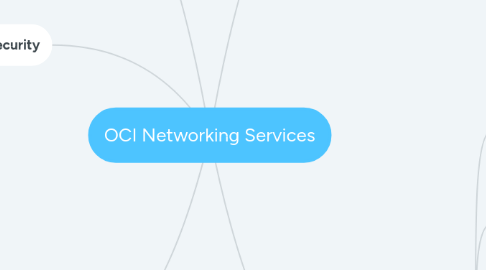
1. Virtual Cloud Network(VCN)
1.1. What is ?
1.1.1. Software defined private network
1.1.2. Set up in OCI
1.1.3. Enables OCI resources
1.1.3.1. Compute Instance
1.1.3.1.1. To securely communicate with internet
1.1.4. Lives in an OCI REGION
1.1.5. HA
1.1.6. Scalable
1.1.7. Secure
1.2. Adress Space
1.2.1. Range of Ip address assing to a VCS
1.2.1.1. 10.0.0.0/16
1.2.1.2. Range
1.2.1.2.1. 10.0.0.0 - 10.0.255.255
1.2.2. Every resources connect to VCN get own
1.2.2.1. PRIVATE IP address
1.2.3. Subnets
1.2.3.1. divide the VCN one or more
1.2.3.1.1. SUB NETWORKS
1.2.3.2. Compute instance are placed in subnets
1.2.3.3. Isolated
1.2.3.4. Sercured
2. Gateways
2.1. Internet Gateway
2.1.1. Provide traffic between your VCN and Internet
2.2. NAT Gateway
2.2.1. enables outbound connections to internet
2.2.2. Block inbound connections initiated from internet
2.2.3. Use case
2.2.3.1. Updates
2.2.3.2. Patches
2.3. Dynamic Routing Gateways (DRGs)
2.3.1. Virtual router
2.3.2. Private traffic between your VCN and Destination
2.3.3. other than Internet
2.3.4. 2 Types Design
2.3.4.1. IPsec VPN
2.3.4.1.1. Use internet Traffic
2.3.4.1.2. Use IpSec Encryption
2.3.4.2. FastConnect
2.3.4.2.1. Private
2.3.4.2.2. Dedicated connectivity
2.4. Service Gateway
2.4.1. Resources in VCN access public OCI Services
2.4.1.1. Object Storage
2.4.2. Without using
2.4.2.1. Internet
2.4.2.2. Nat Gateway
2.4.3. Use Private IP address for routing over
2.4.3.1. OCI network fabric
2.4.4. Never traverses the internet
2.4.5. Use Case
2.4.5.1. Back up DB system in VCN to Object Storage
3. Peering
3.1. What is?
3.1.1. VCN Peering is the process
3.1.1.1. Connecting Multiple VCNs
3.2. Types
3.2.1. Local VCN Peering
3.2.1.1. Connecting 2 VCNs
3.2.1.1.1. In the Same Region
3.2.2. Remote VCN Peering
3.2.2.1. Connecting 2 VCNs
3.2.2.1.1. In the Different Regions
3.3. Using private IP addresses
4. VCN Security
4.1. A common set of Firewall rules associated a subnet
4.2. Applied to all instances launched inside the subnet
4.3. Security List
4.3.1. Rules
4.3.2. Apply
4.3.2.1. Instance talking
4.3.2.1.1. Same VCN
4.3.2.1.2. Outside the VCN
4.3.3. Stateful
4.3.4. Stateless
4.4. Network Security Group
4.4.1. Set of Rules apply only
4.4.1.1. Set of VNICs
4.4.2. More Granular Control
5. Load Balancer
5.1. Tasks
5.1.1. Service Discovery
5.1.2. Heath Check
5.1.3. Algorithm
5.2. Benefits
5.2.1. Fault tolerance
5.2.1.1. Using heath check + LB Algorithm avoiding bad or overload backend
5.2.2. HA
5.2.3. Scale
5.2.3.1. Maximizes thoughput
5.2.3.2. Minimizes Response time
5.2.4. Naming Abstraction
5.2.4.1. Back ends dont need public IP
5.3. Types
5.3.1. Public LB
5.3.2. Private LB
